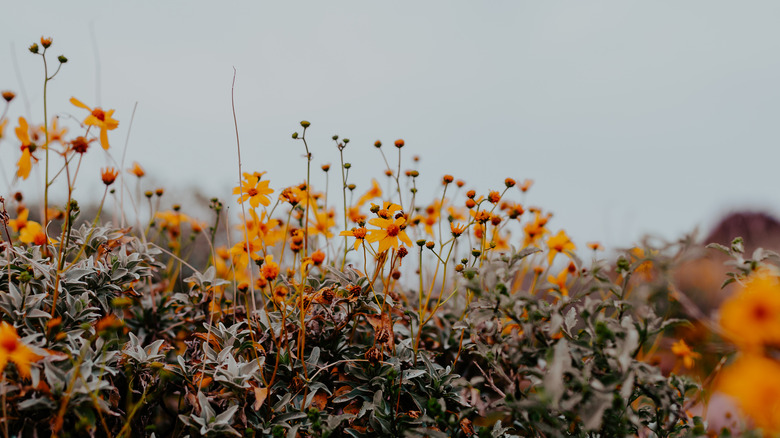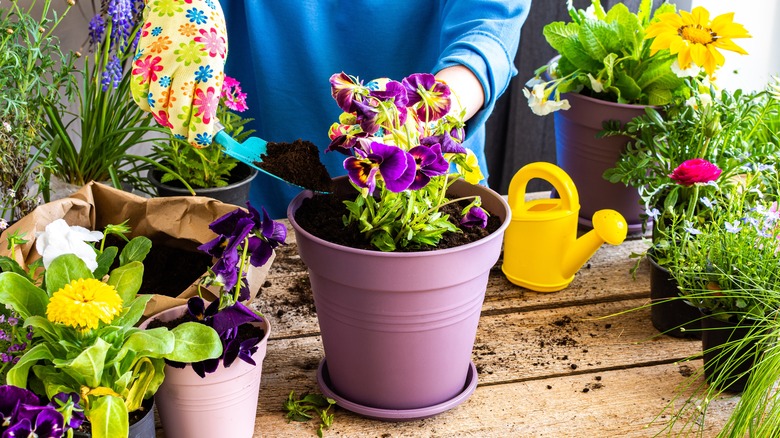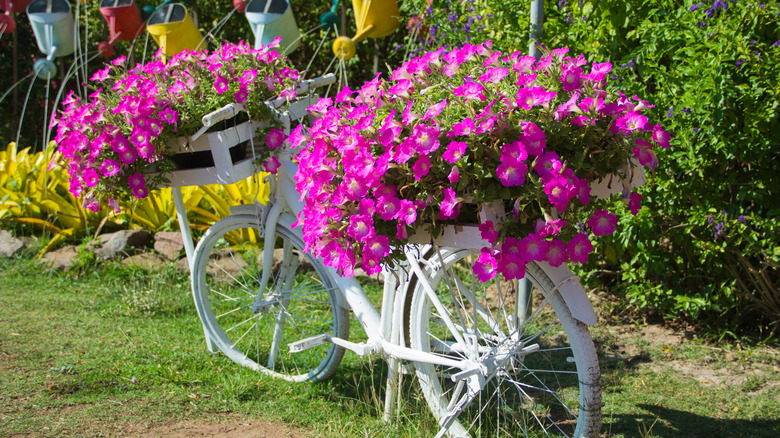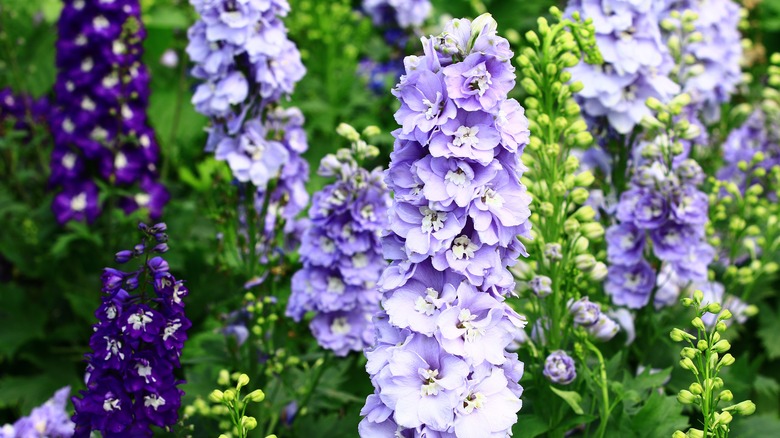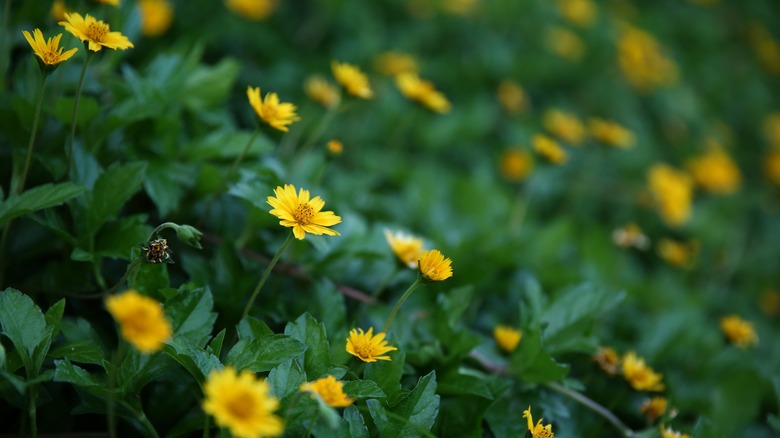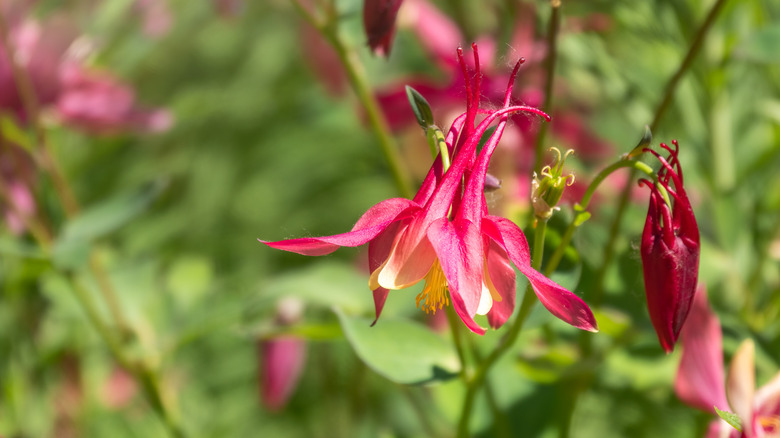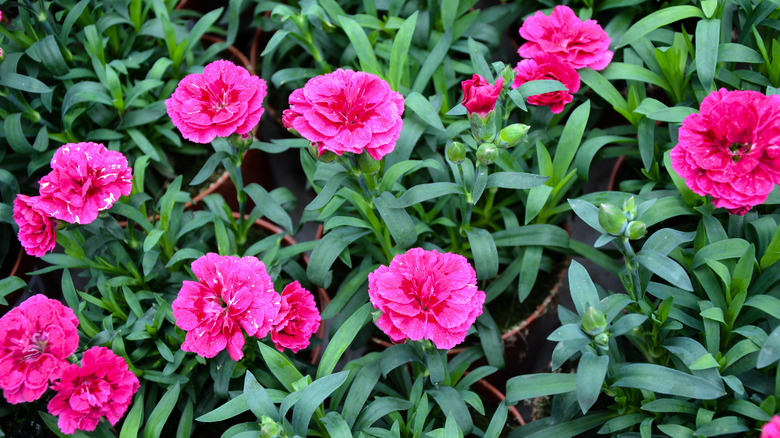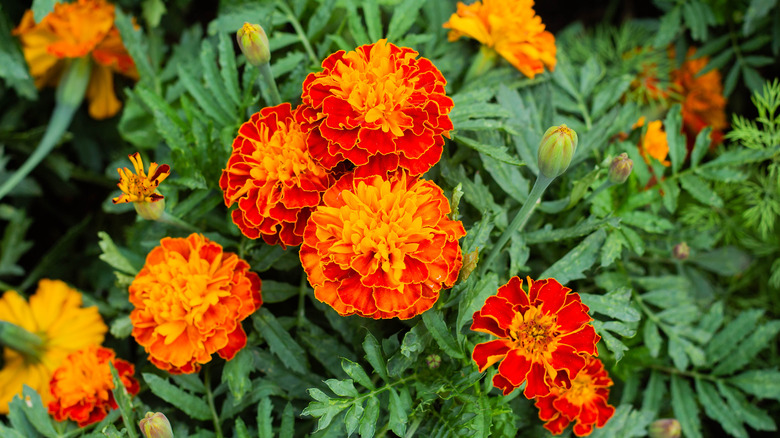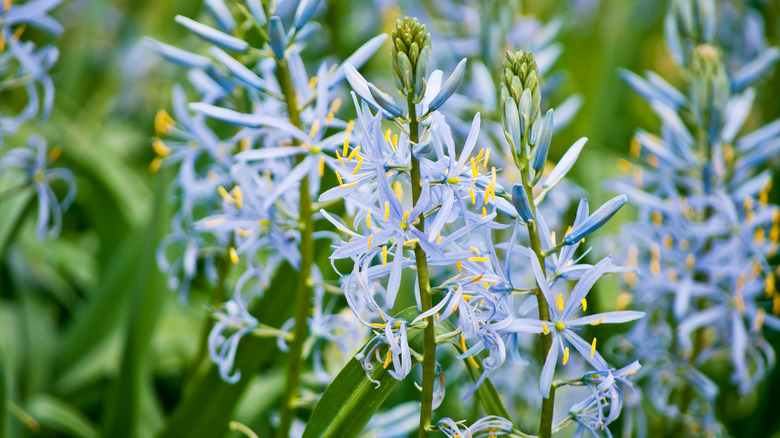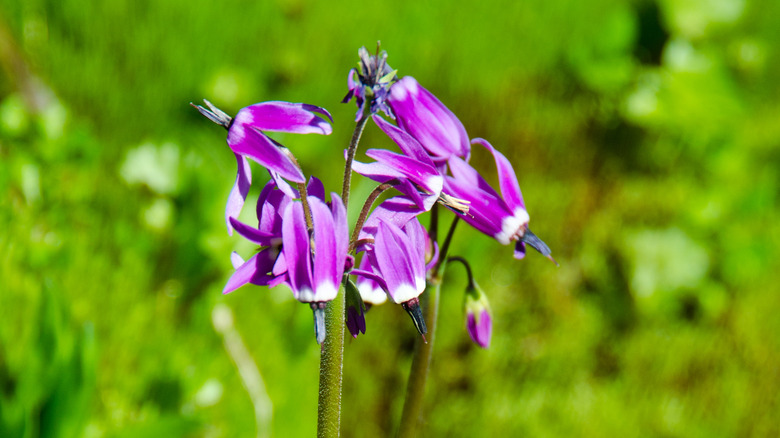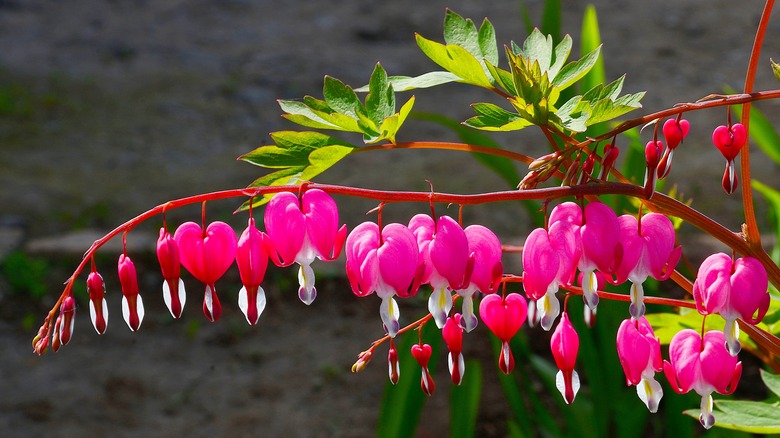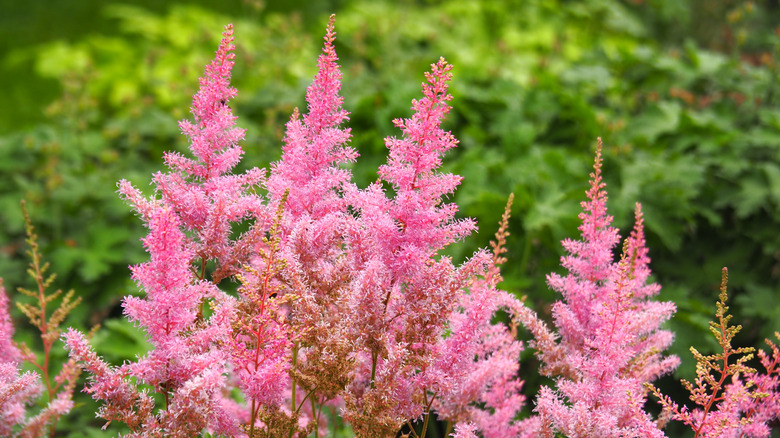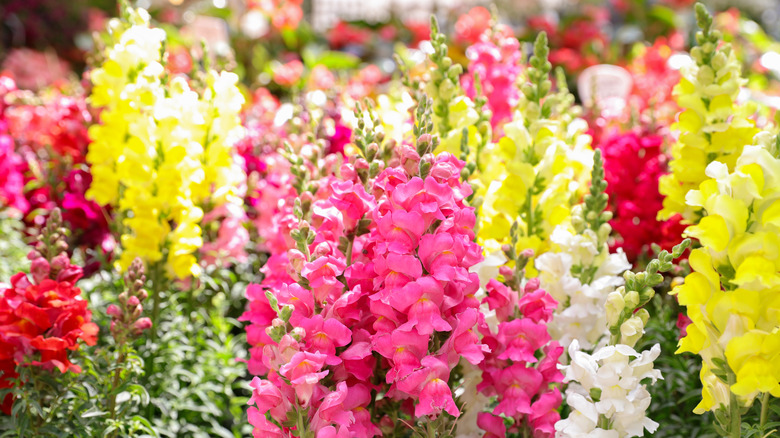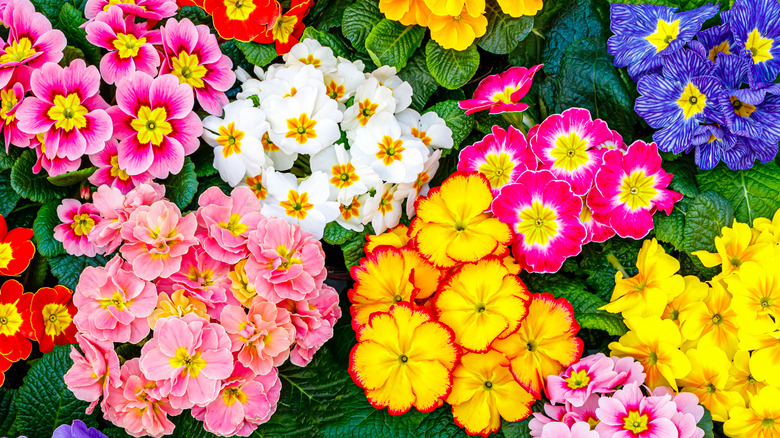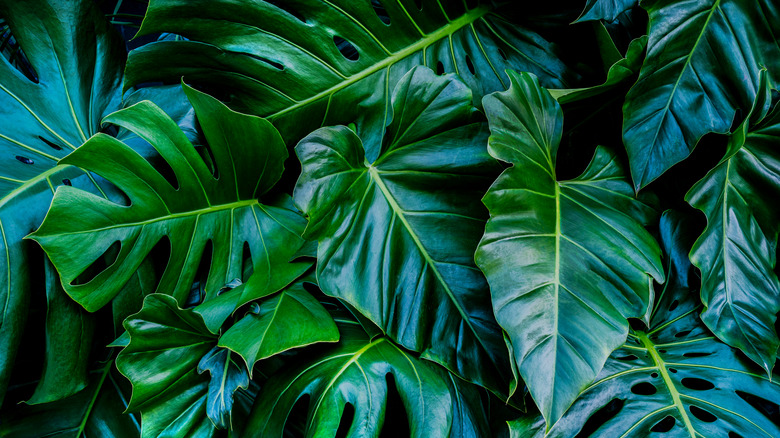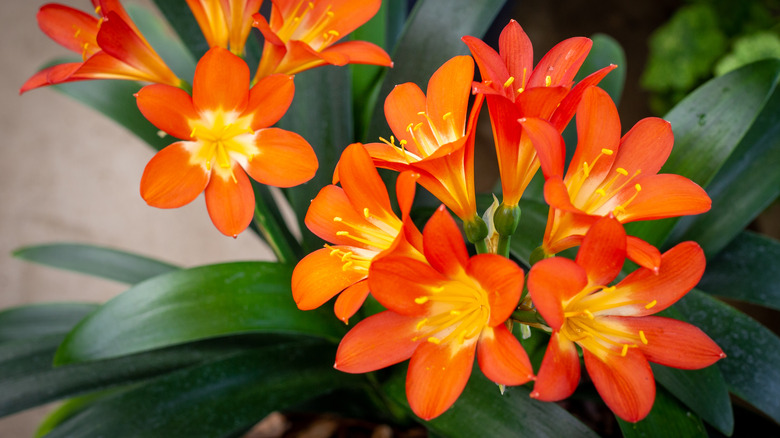15 Flowering Plants You Should Grow In Cloudy Climates
Photosynthesis is crucial to plant growth, but what happens when the sun isn't shining? By reducing the sunlight that comes through, clouds affect photosynthesis. However, growth can still occur because plants retain more water when it's cloudy and cool, according to Gardening Know How. On top of this, some plants are adapted to live in places will low levels of sun exposure.
Cloudy climates are typical in states like Oregon, Washington, New Hampshire, and Alaska, which means that plant lovers in these regions need to know which plants will thrive without constant sunlight when planning their gardens. It's also important to note a plant's needs when it comes to soil type, temperature, and season. Here, we'll list 15 plants you can depend on even when the sun isn't shining. We'll also tell you about their care requirements and where they grow best so you can enjoy a blooming garden even on cloudy days.
1. Pansy
Pansies (Viola x wittrockiana) are annual, evergreen plants. They can bloom from May to September but also through the whole winter (via Gardeners World). Pansies thrive in cool weather and can keep the area beautiful until the summer rolls around. Plant them in moist, well-drained soil in a sunny spot but know that they can withstand a bit of dryness (via Costa Farms).
Expect pansies to grow up to 6 to 9 inches in height. They are hardy in USDA zones 6 and above. Plant in soil that is rich in humus, moist, and well-drained.
2. Petunia
A very common garden plant, petunias (also the scientific name), are native to South America. They are in the Solanaceae family. Some other members of the Solanaceae family include tomatoes, potatoes, and chili peppers. Petunias do well in cool climates but can't manage frost. There are many hybrid varieties, and they vary in size from 1 inch to 4 feet in width (via Grower Direct). Petunias can be grown in zones 9 to 11 with fertile loamy, clay, or sandy soil that is moist and drained well.
3. Delphinium
Delphiniums (Delphinium elatum), also known as larkspur, represent positivity, encouragement, and even protection! Hardy at zones 3 to 7, they thrive in cooler climates and are native to the Northern hemisphere. They are known for their beautiful colors and height: they can grow up to 6 feet! Because of this, they must be staked and protected from strong winds or rain. Another thing to note with delphiniums is that they are toxic and should never be consumed (via Country Living). Plant in soil that is fertile, moist, and drained well.
4. Calendula
Calendulas (Calendula officinalis), commonly called the pot marigold, is a bright-colored flowering plant that does well in cold temperatures. They are native to the Mediterranean and don't need much maintenance, per The Indoor Nursery. This flower comes in yellow and orange varieties. It is safe for human and animal consumption and is used as a garnish and in teas. According to Snaplant, calendulas can be added to foods like soups and salads and can also be used to feed livestock. They are hardy in USDA zones 2 through 11. Calendulas need soil that is well-drained and rich in organic matter.
5. Red columbine
Red columbine (Aquilegia canadensis) is native to parts of the U.S. and Canada. It is known for its red and yellow flowers, which "resemble tiny ballerinas" and attract long-tongued insects, hummingbirds, and bumblebees (via Wild Seed Project). Hardy in zones 3 to 8, this plant is resistant to both cold and hot weather but thrives in humidity. Also known as wild honeysuckle, the red columbine plant can grow up to 2 to 3 feet and has a lifespan of about 3 to 5 years. They do best in loamy or sandy soil that is well-drained and organically rich.
6. Pinks
Commonly known as pinks due to their petals, Dianthus do well in both heat and cold. They are hardy in zones 3 to 9, low maintenance, and have a nice scent in addition to their beauty (via Gardeners' World). Pinks come in a wide range of colors and forms — carnations (Dianthus caryophyllus) are a common variety. If you are planting a perennial dianthus, do so in the cooler months; annuals and biennials should be planted in spring, says Garden Design. Pinks are quite tolerant of soil types but thrive in neutral to slightly alkaline soil that is drained well.
7. African daisy
The African daisy or cape (Osteospermum) is another beautifully blooming plant that can withstand the cold. They can be grown in USDA hardiness zones 10 and 11. When handled well, they will have a few flowers during the winter that can offer a nice pop of color. You can do this by shaping them during the fall and giving them the appropriate amount of fertilizer and mulch during the winter, per Eco Family Life. African daisies prefer moist, well-drained soil that's rich in nutrients.
8. Common camas
Common camas (Camassia quamash) is native to the northwestern U.S. and its use goes way back to the indigenous communities in those areas. The bulbs were eaten and the roots were very valuable, per the Washington Native Plant Society. Common camas are great for cloudy climates because their seeds require cold stratification and a lot of heat or moisture loss can be harmful to their growth (via Alderleaf Wilderness College). They can be grown in zones 4 to 11 and prefer loam soil rich in organic matter but can tolerate most soil types.
9. Tall mountain shooting star
Tall mountain shooting star (Dodecatheon jeffreyi) gets its name from how "the petals trail behind the stamen tube like the tail of a shooting star," explains Biodiversity of the Central Coast. This plant grows in moist, wet areas, from high elevations to the coast, which makes it ideal for cloudy climates. A tall mountain shooting star can grow up to 6 to 24 inches tall, and you can expect colors like white, yellow, magenta, and lavender, per Turner Photographics. Its USDA zones are 4 to 9, and it is tolerant of most soil types.
10. Asian bleeding heart
The Asian bleeding heart (Lamprocapnos spectabilis or Dicentra spectabilis) is a Valentine's favorite that is native to Asia in certain areas of China, Siberia, and Japan. While popular for its dangling pink, heart-shaped flowers, its petals can also be red and white. Hardy in zones 3 to 9, this plant does fine in cool weather but requires sufficient preparation to keep its flowers during the winter. According to Gardener's Path, this looks like pruning, cleaning out plant debris, keeping the roots moisturized, and adding mulch. It prefers soil that is moist and rich in humus and organic matter.
11. False goat's beard
False goat's beards (Astilbe) have a showy display of tall, feathery flowers. Native to certain Asian and North American areas, its flowers come in various shades of pink, purple, and red. They prefer partial shade but will still grow in full shade, per Longfield Gardens. According to Get Busy Gardening, false goat's beards are hardy, can handle frost, and "bloom best when they receive partial or dappled sunlight." They are hardy in zones 3 to 9 and thrive in loamy, moist soil but can do fine in any soil type.
12. Snapdragon
Snapdragons (Antirrhinum) are also known as dragon flowers and dog flowers. This plant has many varieties in multiple colors and grows between 6 inches and 3 feet, per Gardening Know How. Native to the Mediterranean, snapdragons are hardy in zones 7 to 11 and can withstand freezing temperatures. They need soil that is nutrient-rich, moist, and well-drained, as well as a cold environment to germinate and grow. Snapdragons are actually edible but are more popular for their beautiful flowers and how they are displayed on long stalks.
13. Primrose
The primrose (Primula vulgaris) gets its name from the phrase 'prima rosa', which is Latin for 'first rose'. It is native to some regions of Europe, Asia, and Africa but is quite popular in the U.K. Primroses are hardy in zones 4 to 8 and have a preference for moist soil. They are able to produce flowers "from as early as December in mild years...through the spring" (via The Wildlife Trusts). They come in a wide range of colors and grow up to 10cm in height. While they can be eaten, they are toxic to some animals.
14. Swiss cheese
Swiss cheese (Monstera deliciosa) plants grow big and need adequate space to thrive. Their scientific name is derived from their big and tasty fruits. Hardy in zones 10 to 12, they are low-maintenance and can be placed inside or outside. Native to some tropical North and South American regions, swiss cheese plants can grow up to 10 feet in height and prefer humid environments (via Guide to Houseplants). Feel at ease when growing these in a cloudy climate because they thrive in indirect sunlight and can tolerate cold temperatures, per Apartment Therapy. They need heavy soil that is rich in nutrients.
15. Clivia
Clivia (also the scientific name) plants were named after Lady Florentina Clive, who was the Duchess of Northumberland and granddaughter of the Clive of India, according to Indiana Public Media. They are indigenous to southern Africa and have showy flowers that appear in clusters. An adult clivia can get up to 2 to 3 feet in height and width; the Chicago Botanic Garden advises buying one that's fully grown because it takes a while to get to this point. They are hardy in USDA zones 9 and 10 and thrive in very rich, well-draining soils.
